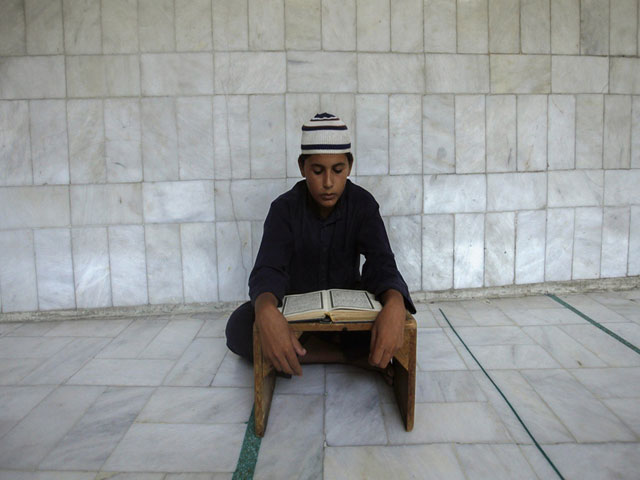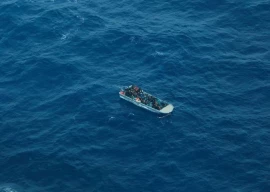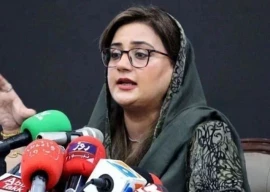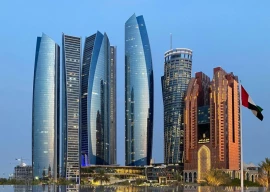
It is alarming that the killers of Sabeen Mahmud or Daniel Pearl were not poverty-stricken radicals or brought up and brainwashed on charity. Like them, hundreds of others subscribing to the fanatic interpretation of religion, sect and ethnicity have had exposure to the universities and occasionally to the best schools abroad.
Military options alone not sufficient to counter extremism
The rogue children of classical middle-class can be found in sectarian and ethno-nationalist camps. The numbers have been soaring and not just within Pakistan but also within the expatriate community. Social media platforms such as Facebook and Twitter, in particular, spew alarming trending topics and fearsome reflections therein. Sectarian and ethnic militias go cyber through tools like ‘Telegram’ and ‘Signal’ much before any given sleuth, journalist or academic. Truly, the challenge of extremism and fanaticism is bewildering.
Despite their diminishing significance owing to changing trends and tools, madrassas remain an elephant in the room. Bizarrely, the regulation, moderation and mainstreaming have been tasks the executive served better with rhetoric than action may it be Musharraf, Zardari or Nawaz at the helm.
During over four years in power, Nawaz Sharif’s PML-N failed to take concrete steps in stemming soaring religious intolerance. An ill-advised decision of reviving the ‘Pakistan Madrassa Board’ has reduced the state’s role from regulator to a competitor, also seen as a giant step backwards.
As per a report presented by the government in the Senate early in 2015, at least 23 madrassas were tracked across Pakistan for foreign funding. There exist madrassas that receive informal funding from foreign sources to propagate hard-line views to the younger generation. The sources of foreign funding vary from Iran and Iraq on one hand, and some Arab influential in the Gulf on the other. However, Islamabad could not find traces of a foreign government explicitly funding any religious seminary due to an absence of official and formal dealings.
Terrorist attacks in 2016 'considerably more deadly': study
According to the ministry of religious affairs, some 200,000 youth ‘graduate’ from over 26,000 madrassas every year. Graduates from these intuitions either mostly remain jobless or work as prayer leaders for just Rs 10, 000.
Though there was no governmental oversight on seminaries’ curricula and funding sources, the then prime minister Benazir Bhutto discontinued the formality of registration in 1996. That very decision led to the mushrooming of unregistered madrassas in the country. Not many availed the option to register themselves when Pervez Musharraf offered concession until September 30, 2005.
Only two attempts were made since 9/11 to bring the autonomous madrassas into the mainstream academic setup.
Not only did Musharraf amend the Societies Registration Act of 1860, requiring madrassas to register with the government and submit audited financial statements along with a list of donors every, he also lost his interest in reform owing to political challenges from the opposition.
Through a Memorandum of Understanding (MoU) with the umbrella organisation of seminaries – Ittehad-e-Tanzeemate-Madaris Pakistan (ITMP) – he also consented to include compulsory science and art subjects at matriculation and intermediate levels. The government formed a regulatory body within a month. The parliament could not prepare the draft legislation for review by the seminaries’ leadership and missed the chance.
Naureen was not recruited by terrorists from university: LUMHS VC
Despite bitter sectarian differences, several clergy leaders tend to unite whenever madrassas have been threatened for operating illegally, radicalising the youth and having dubious funding sources. To strike parity with the mainstream academic institutions, the situation necessitates a greater role in determining the madrassas’ curricula, quality of teachers and examination standards.
With the conclusion of ‘Operation Zarb-e-Azb’ in most parts of Waziristan, unregulated and shadowy madrassas must be tackled as part of a grand strategy to curb radicalism and extremism. The state has to come forward and assert its writ beyond the agency to curb extremism, backed by local or foreign support.
Islamabad needs to reactivate the ITMP as per the original vision evolved after a consensus of management of leaders of various madrassas. The government has neither the capacity to nationalise them nor the ability to deal with angry mobs, protesting and jamming the economy already under IMF debt.
The challenge does not merely require executive or constitutional remedies. In fact, besides registration and mainstreaming of mosque and madrassas, training of religious teachers and imams has to be mandatory, widespread and stringent. The financial help from the Gulf States will not stir conspiracy theories amongst the religious cadres in Pakistan.
Law enforcement agencies plan to collect data of university students
Over the decades, a spike in sectarian as well as ethno-nationalistic fanaticism has not been addressed in an overarching systemic manner. The culture of intolerance and drifts to impose Senate views or ways of life are not unique to Pakistan alone.
The world underwent a mammoth task of de-radicalisation after the World War II when it faced the challenge of curbing ‘Nazism’. Ever since scores of success stories against extremism and intolerance emerged, each rooted and accustomed to its peculiar setting. Excessive use of force, military courts or policing could not have helped them achieve Europe, which it did in the post-war era.
Pakistan lacked a holistic approach to learn from the existing body of knowledge and adapting practical and theoretical facets of successful strategies and methods to de-radicalise the society and bring the fringe elements back to the mainstream. Using a coherent theory of radicalisation and de-radicalisation and integrating it into typology and methodology of projects can do the trick.
Two de-radicalisation centres setup after the Swat operation offer a good pilot project. Nevertheless, academia and experts have yet to delve deep in devising ways to measure effectiveness, standard methods and procedures for such programme from the national perspective.
For that matter, Understanding De-radicalisation: Methods, Tools and Programs for Countering Violent Extremism by Daniel Koehler comes handy by building what amounts to the genuine theory of de-radicalisation programmes.
An innovative solution to extremism
Besides, Pakistani society longs for restorative justice policy whereby the social trauma – which can even be dubbed as post-traumatic stress disorder – could be addressed. Television, whether news or entertainment, have to shy away from propagating violent scenes while the censor board must also evaluate films, national or foreign, on the same touchstone.
Regrettably, the academic institutions have not been part of the de-radicalisation campaign.
The old-fashioned debating forums and essay writing contests or intra-district and inter-provincial exchanges have gone obsolete. Participation of youth in extracurricular activities, including sports, should be reflected alongside his academic grade.
Similarly, the grassroots economic development also hits at the heart of poverty. Lack of jobs in the private and public sectors is a trial requiring immediate remedy. Expanding vocational training centres under strict regulations for quality education cannot be delayed any further. To start with, stress should be given on districts with higher poverty and extremist trends for imparting technical training.
The most daunting aspect of radicalisation is the one Pakistan is least prepared for, the cybersphere. That is where self-radicalisation occurs, eventually, the youth embracing a certain extremist group, which may or may not indulge in active terrorist acts. As much as social media is tantamount to urban Pakistan’s pulse, it also presents the opportunity to create content to counter extremism. Banning social media outlets or blocking certain Twitter or Facebook accounts equates to brushing the dirt under the carpet.
A hyper-nationalistic rhetoric mistaken for counter-terror narrative fails to engage an isolated and confused mind. Based on a comprehensive theoretical framework drawn from global success stories of de-radicalisation, a holistic strategy has to be put in action with political will trickling down from the very top. Time is always of the essence.
Naveed Ahmad is a Pakistani investigative journalist and academic with extensive reporting experience in the Middle East and North Africa. He is based in Doha and Istanbul and tweets @naveed360
1737426578-0/Untitled-design-(65)1737426578-0-405x300.webp)


1737416356-0/Trump-(9)1737416356-0-165x106.webp)



















COMMENTS
Comments are moderated and generally will be posted if they are on-topic and not abusive.
For more information, please see our Comments FAQ